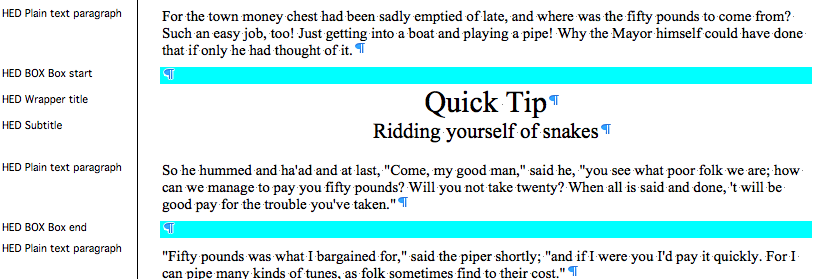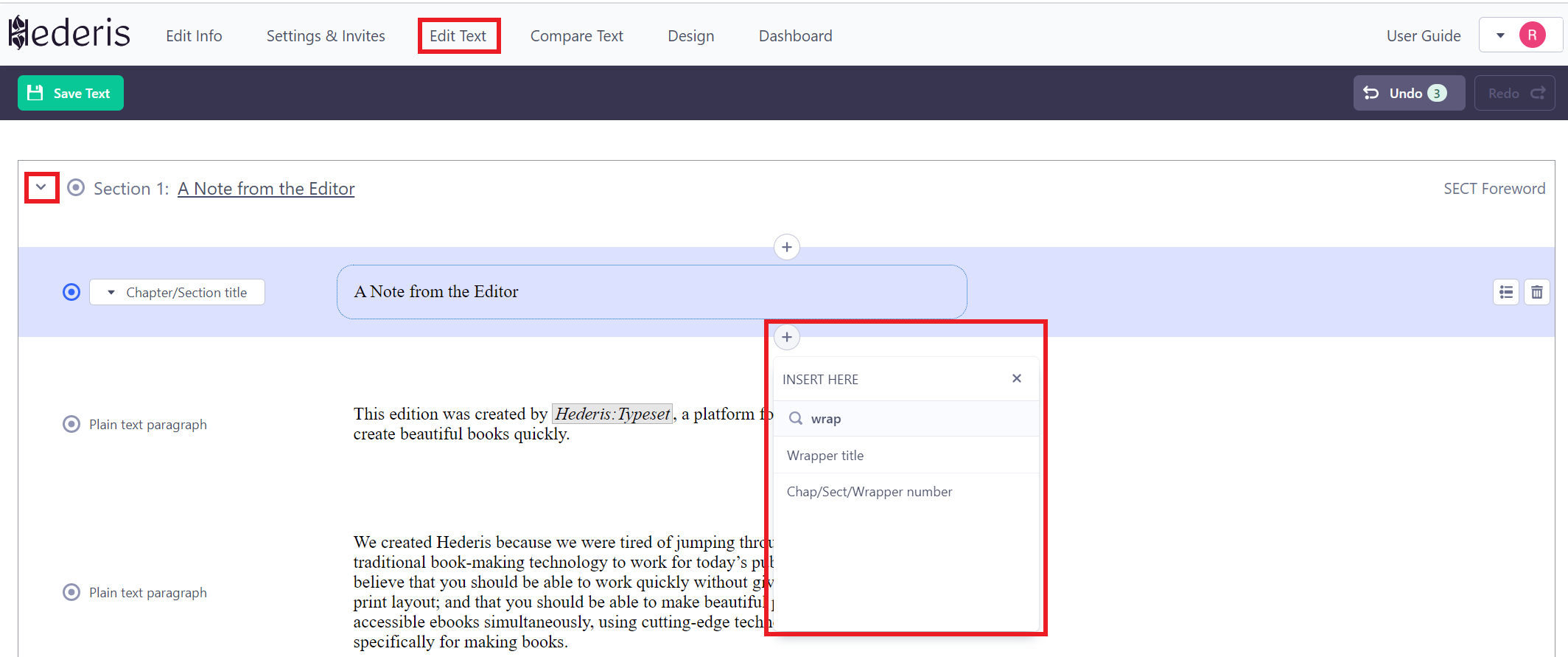Certain groups of paragraphs need to be enclosed in a wrapper, which will add special design and formatting instructions for the paragraphs inside it. Examples of types of wrappers are: extracts, letters, code blocks, poems, complex lists, complex figures, and more. Wrapper styles all start with the prefix “HED BOX”, and always come in a pair: one style to mark the beginning of the wrapper, and one style to mark the end.
Many paragraph styles can be re-used both in the main flow of text and inside wrappers, and will appear differently depending on whether or not they’re in a wrapper. For example, the HED Plain text paragraph style is used as the basic paragraph type for content in the main text, as well as for paragraphs inside boxes and sidebars, like this:

Here’s how to add a wrapper around a group of paragraphs.
In the Hederis Edit Text pane, do the following:
Find the paragraph above which you want to add your new wrapper, and click to select it.
In the top menu, select Insert Wrapper, and choose the type of wrapper you’d like to insert.
Two new paragraphs will be inserted: one to mark the start of the wrapper, and one to mark the end. You can now move existing content inside the wrapper (see “Moving Text Around”), or add new paragraphs (see “Add a Paragraph”).

In Microsoft Word, do the following:
Insert new paragraphs both before the first paragraph in your group of paragraphs, and after the last paragraph in the group.
Style the first new paragraph with the “start” style for the wrapper that you want to use. For example, if you’re inserting a letter, you should style this paragraph with the “HED BOX Letter start” style.
Style the second new paragraph with the “end” style for the wrapper that you want to use. For example, if you’re inserting a letter, you should style this paragraph with the “HED BOX Letter end” style.

Note
Wrappers can be nested inside other wrappers. For example, an epigraph might contain a block of poetry; and a bulleted list might contain a nested numbered list. Both of these would be accomplished using wrappers. Here’s an example of nested lists:
